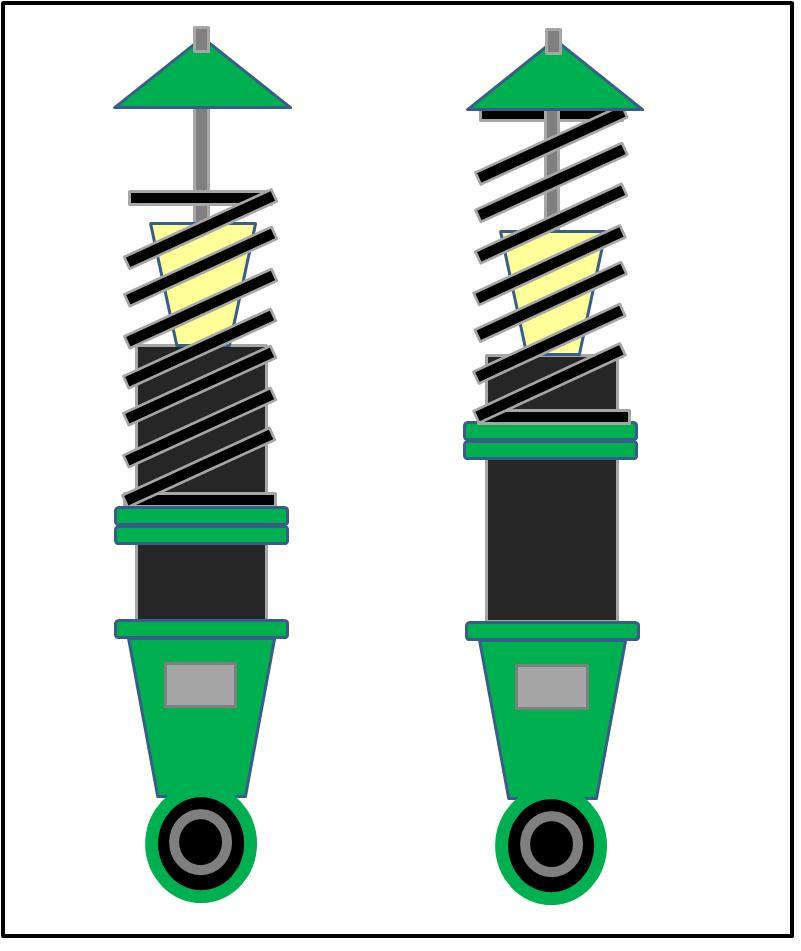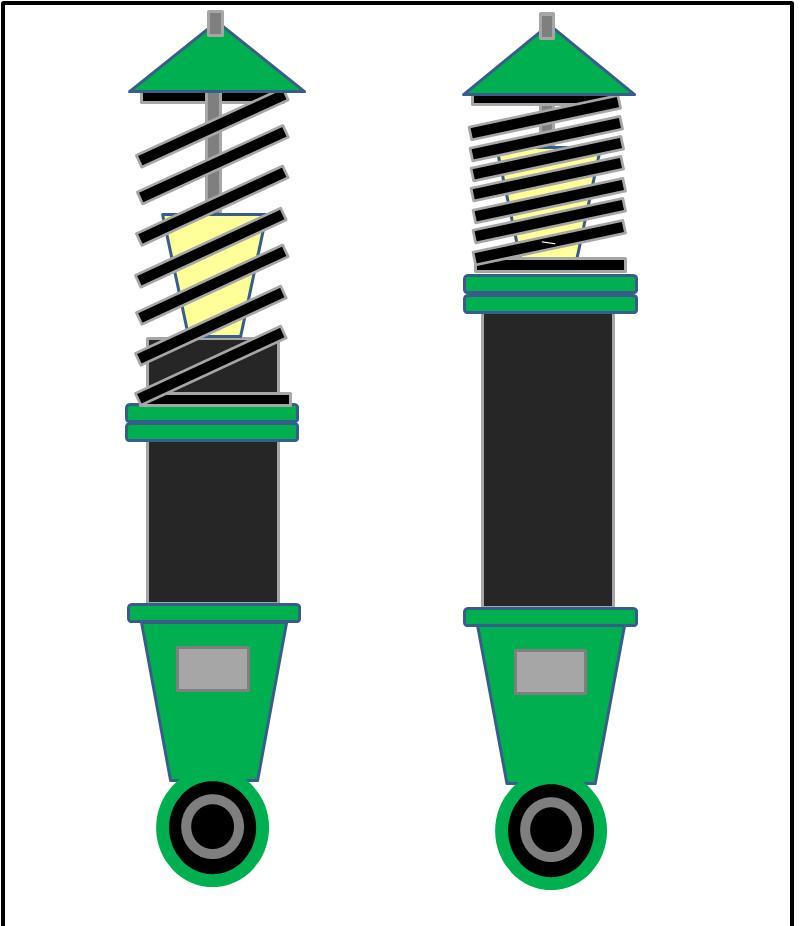Full-length adjustable coilover spring tension is an area which many consumers aren’t too knowledgeable about. Details that “more preload is best” or “no preload is best” have always been a talked about subject. In general, the function of the spring tension on a full length adjustable coilover is for a more fine tuning of the suspension if used competitively. Such preload adjustments for regular street driven vehicles, which seldom see a track event, aren’t really need. That’s not to say that you can not use the preload on the street. It’s just that there would not be much of an advantage unless you are looking to achieve a desired ride height or ride feel.
Preloading will change the characteristics of the spring, but not the spring rate. As the spring is a linear in rate, the rate will not change under preload, but the spring’s reaction will be affected. With the spring compressed, its natural instinct would be to push back to its original shape. Thus, the force already exerted when compressed will creating a more aggressive ride quality. The drawbacks to having too much preload will be spring bind or, in worst case scenarios, a broken piston rod or damper component. Spring bind can create a loud tapping from the springs during normal use of the vehicle, not to mention terrible ride feel since spring stroke is all but eliminated. The continuous spring binding creates a kind of solid state to the coilover assembly which will transmit the road vibrations and shock over to other damper components, eventually causing it fail.The broken piston rod or component can be caused by the excess spring tension, as well.
Relieving preload from the spring or creating “negative preload” would change the ride height of the vehicle along with the dampers’ piston stroke. The drawbacks to excessive negative preload would be a loss of piston stroke, noise from the spring, poor ride quality, and eventually damper failure. The piston stroke loss would allow for the damper to bottom out, which in turn would create a poor ride quality as the dampers’ upper springs seat or mount would be riding against the bump rubber. With the constant bombardments, the bump rubber will eventually break down causing some of the rubber material to fall in between the seal which can then cause the seal to fail. This can also create noise caused by the spring’s loose condition, which will shift back and forth on the damper assembly when the damper is extended and compressed. This occurrence is most common over uneven road surfaces such as driveways, dips, or at times freeway expansion joints. This could cause damage to the damper body threads, spring seat, and upper mount.

If you are uncertain as to the preload of your full-length adjustable coilovers, the best recommendation is to set the spring seats to the installation manual’s suggested position. This position will offer the optimal damper stroke and adjustability.

